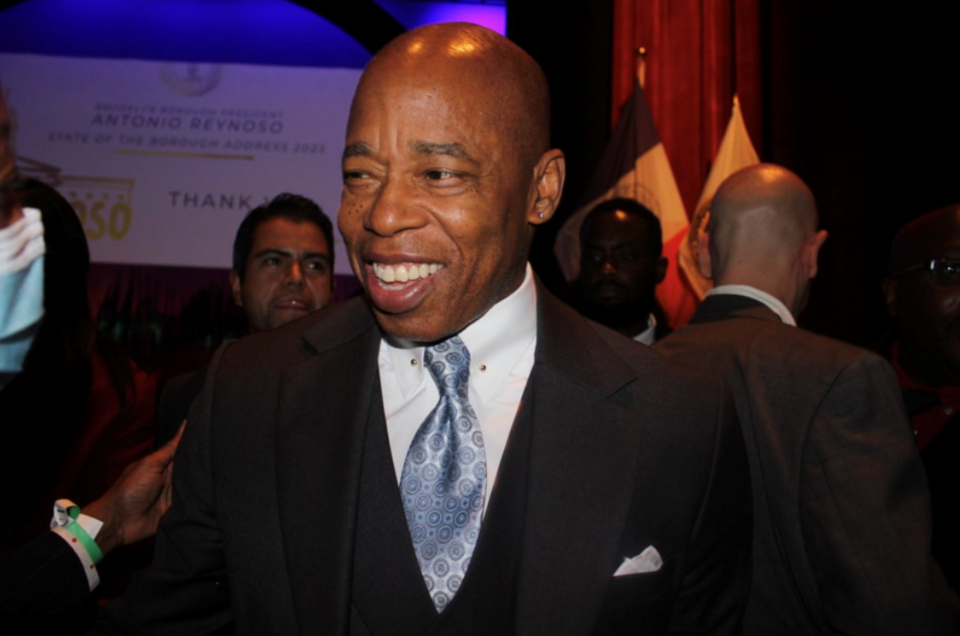By New York City Mayor Eric Adams
Public safety is our administration’s top priority, and keeping New Yorkers safe from the growing threat of fentanyl is a core part of that mission.
All of us have heard about the danger fentanyl poses to our children and our communities. Fentanyl is a synthetic opioid that is approximately 50 times more potent than heroin and 100 times more potent than morphine. It is inexpensive, widely available, highly addictive, and extremely dangerous.
Drug traffickers are increasingly mixing fentanyl with other illicit drugs to drive addiction and create repeat business. Over 3,000 people fatally overdosed in New York City in 2022, with fentanyl detected in 81 percent of drug overdose deaths.
The tragic death of Nicholas Dominici, the toddler who died after being exposed to fentanyl at a daycare center, was a shocking and heartbreaking reminder that we must take immediate action to get this crisis under control.
Last week, we hosted a two-day summit on the fentanyl crisis that brought elected leaders, public health officials, and law enforcement professionals from across the country to New York City to work towards a national strategy to combat fentanyl overdoses.
The summit included representatives from major cities across the nation, including Los Angeles, Philadelphia, New Orleans, Laredo, New Haven, Austin, Dallas, St. Louis, Washington D.C., Portland, San Diego, Atlanta, and more. We focused on all aspects of the crisis – including education, enforcement, awareness, prevention, and treatment. Over the course of two days and multiple strategy sessions, we were able to exchange ideas, learn from intervention models across municipalities, and help build a comprehensive strategy to address one of the most important public health and public safety issues of our time.
New York City has already taken significant steps to combat the fentanyl crisis, including intensive enforcement that has resulted in multiple arrests of drug dealers and traffickers, including the recent arrest of a man transporting almost 30 pounds of fentanyl bricks in a rolling suitcase on the subway and on the sidewalks of a busy Bronx neighborhood.
In addition to expanded enforcement, we are actively working with the New York City Department of Health and Mental Hygiene and other agencies to bolster our harm reduction strategies. We have increased our support for prevention, substance use disorder treatment and recovery programs citywide, and distributed more than 77,000 Naloxone kits and tens of thousands of fentanyl and xylazine test strips. We have also made Naloxone more available in primary care offices, emergency rooms, correctional, reentry, and homeless outreach settings.
At the conclusion of the summit, participants agreed on key actions to address the ongoing fentanyl crisis, including:
- Creating a multi-city task force that will meet again before the end of the year;
- Drafting a comprehensive plan outlining national best practices and opportunities;
- Expanding data-sharing to the national level to ensure accurate and timely coordination around lab and overdose data;
- Identifying and securing city, state, and national funding and legislative needs to prevent overdose deaths and save lives,
- Developing community outreach strategies to better understand behavioral dynamics associated with drug abuse, and
- Taking steps to reduce the stigma around addiction and substance abuse so that those suffering from addiction can get help before it is too late.
We all came away from this summit with a renewed determination to stop the flow of fentanyl into our cities, hold bad actors accountable, and invest in evidence-based interventions that protect New Yorkers and all Americans from this dangerous drug.
We cannot sit back and let what happened to prior generations happen to our babies and families. We cannot repeat the mistakes that were made that led to the epidemics of heroin in the 1960s and crack cocaine in the 1980s.
I was working as a police officer during the 1980s, and I saw how crack devastated our communities because the resources were not there. We must do everything in our power to confront — and defeat —the fentanyl crisis. That means education, that means treatment, and that means enforcement.
The summit reminded us that we are always stronger and better when we work together. I know that, with our partners from across the country, we can and we will reduce overdoses, save lives, and protect our children and our communities.




